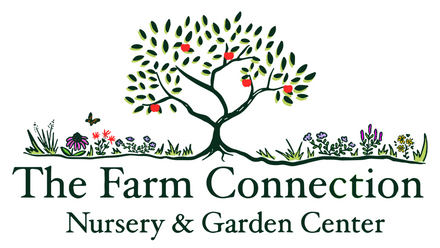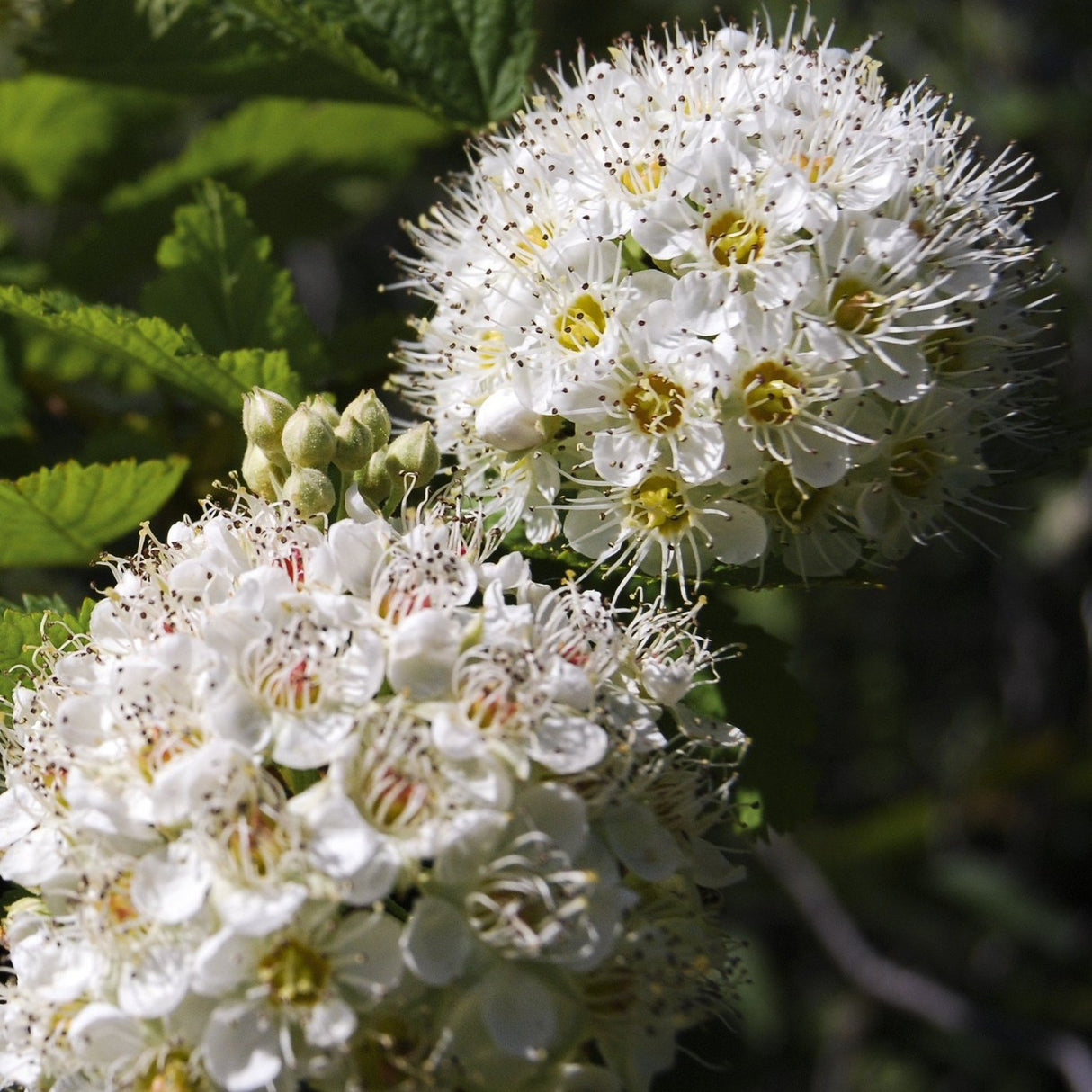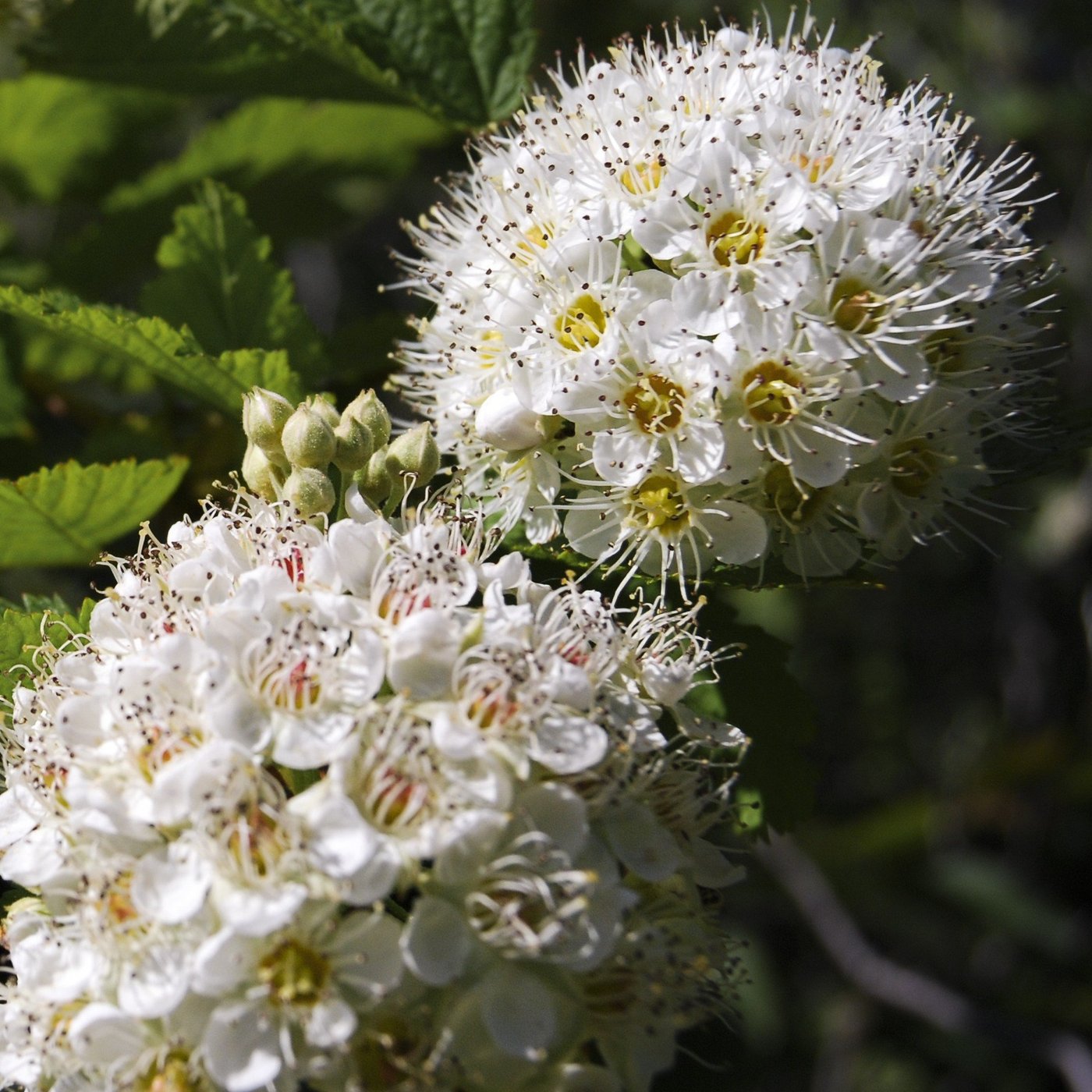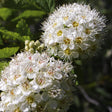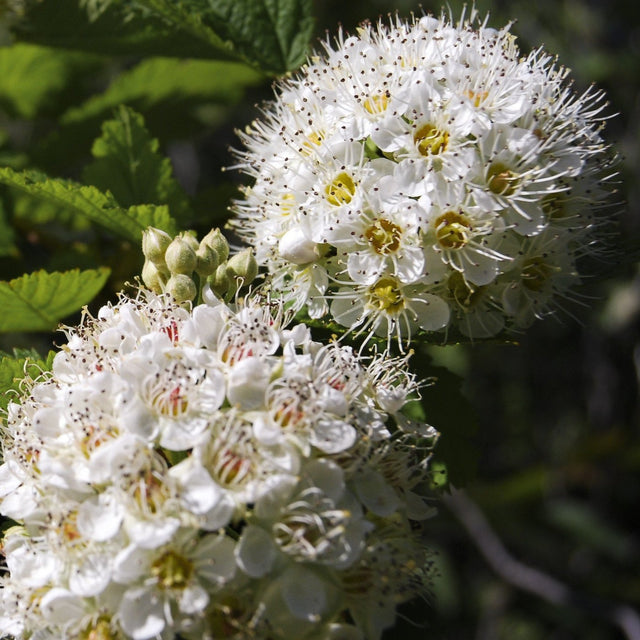Ninebark, Bare Root
Tough, Beautiful Shrub for Pollinators & Slopes
Ninebark, Bare Root - Bare Root / 6-18" Seedling is backordered and will ship as soon as it is back in stock.
Couldn't load pickup availability
Delivery and Shipping
Delivery and Shipping
Make sure to thoroughly review our entire "Shipping, Returns, Refunds, and Our Guarantee" page for all relevant details about ordering from our store.
Making a purchase from our store constitutes an agreement to all the conditions outlined in those policies.
We appreciate your support and look forward to being your favorite plant provider!
Subscribe to our newsletter
Sign up for exclusive offers.
Ninebark (Physocarpus opulifolius)
Ninebark is a rugged, fast-growing native shrub admired for its year-round beauty, pollinator-friendly flowers, and usefulness in restoration and habitat plantings. Native to much of eastern and central North America, Ninebark thrives in a wide range of soils and light conditions, making it ideal for hedgerows, streambank stabilization, and native gardens. Its showy clusters of white-to-pink flowers in spring are followed by red seed capsules, exfoliating bark, and striking fall color—making Ninebark as functional as it is ornamental.
Key Characteristics
-
Pollinator-friendly spring blooms
In late spring, Ninebark produces clusters of small white or pink-tinged flowers that are rich in nectar and pollen, attracting native bees, beneficial wasps, and early butterflies. It’s a reliable mid-season food source for pollinators. -
High wildlife value and structural habitat
The dense branching provides excellent nesting and cover for birds and small mammals. Its seed heads persist into fall, offering food and visual interest. The plant's thicket-forming habit makes it valuable in shelterbelts and wildlife corridors. -
Tolerant of tough conditions
Ninebark is incredibly adaptable—it tolerates drought, clay, wet soils, urban pollution, and periodic flooding. This makes it an excellent choice for rain gardens, streambanks, roadside restoration, and other challenging sites. -
Four-season beauty and low maintenance
Its name comes from the mature bark, which peels in layers to reveal a mosaic of reddish-brown tones—adding winter interest. Combined with vibrant green foliage (or colorful cultivars), spring flowers, and fall reds and purples, Ninebark delivers beauty all year. -
Useful in permaculture and erosion control systems
With its fibrous, soil-holding roots and fast growth, Ninebark stabilizes slopes and supports early succession in rewilding and regenerative designs. It integrates well into native hedgerows, shrub borders, and riparian buffers.
Product Details
- Native range: Eastern and Central North America
- Plant life cycle: Deciduous Shrub
- Sun requirements: Full sun to partial shade
- Soil requirements: Medium-dry to medium-wet; tolerates clay, loam, or sandy soils
- Mature height: 5–10 feet
- Bloom time: Late spring to early summer
- Bloom color: White to pale pink
- USDA Hardiness zones: 3–8
Ninebark is a resilient and beautiful native shrub that offers strong wildlife support, soil stabilization, and visual appeal in all seasons. Perfect for hedgerows, riparian plantings, and regenerative designs.
-
Sun RequirementsFull Sun, Part Sun/Shade
-
Soil RequirementsMedium, Medium-Dry, Medium-Wet, Wet
-
Bloom ColorWhite, Pink
-
Bloom TimeMay, June
-
USDA Hardiness ZonesZone 3, Zone 4, Zone 5, Zone 6, Zone 7, Zone 8
-
Native StatesMaine, Vermont, New York, Pennsylvania, Ohio, Illinois, Indiana, Michigan, Wisconsin, Missouri, Kentucky, Tennessee, Virginia, North Carolina, South Carolina, Georgia, Alabama
Payment & Security
Payment methods
Your payment information is processed securely. We do not store credit card details nor have access to your credit card information.
